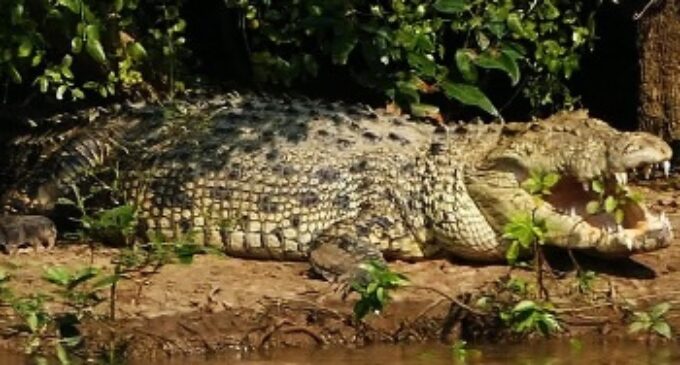Bhitarkanika National Park in Odisha closes for visitors to facilitate breeding of crocodiles

The Park will remain closed from May 1 to July 31
By Sukant Mohanty
Bhubaneswar, May 2: The Bhitarkanika National Park and Wildlife Sanctuary in Odisha’s Kendrapara district was on Monday declared closed for visitors and locals from May1 to July 31 in view of the breeding season of the estuarine crocodiles.
Since the three months period between May 1 and July 31 is considered as the mating and nesting season of the crocodiles, the gate of the National Park is closed every year during this time to ensure safety of the visitors and the aquatic animals.
According to the authorities, crocodiles turn more violent during this mating season. If the park is kept open during this season, tourists will continue to visit the site by mechanised boats the sound of which makes the animals violent. They may cause harm to visitors.
The crocodiles choose high ground to lay and hatch eggs. This is because the high ground places don’t get submerged and get proper sunlight. They also hide their eggs with dry leaves and keep a watch on them.
The forest department of the Odisha government has made adequate arrangements to protect the eggs from being devoured by predators like snakes, jackals and dogs found in the jungle.
As per the government information, there are 1793 crocodiles in total in the rivers and rivulets flowing in Bhitarkanika area.
Bhitarakanika is the richest storehouse of mangrove genes. Researchers have come across here 11 of the world’s 70 mangrove species which were at elevated threat of extinction.
The congenial and interference-free environs along the wetland spots of Bhitarkanika National Park also attract lakhs of avian species to arrive here every year during the winter. It’s always a treat to watch feathered species with their chirpy cacophony adding colour to the vibrant ecosystem of the region.
Bird species, including the Eurasian wigeon, Ferugenius and Shobeller which are accorded highly threatened status as per Red Book Data of International Union of Conservation of Nature (IUCN), also arrive here in a great number. These species migrate from Siberia, Ladakh, Lake Manasarovar and the Himalayan region and return to their native places after the winter is over.
The other prominent species which make Bhitarkanika their winter home are Brahmin Duck, Bar-headed Geese, Godwin, Pintail, painted stork, seagulls, commonteal, tawny eagle and osprey.
According to the local forest officials, there is ample food security for the birds as the place crisscrossed by innumerable water inlets and nullahs is free of human interference.
Unbearable cool atmospheric conditions during winter months forces these migrant species to temporarily leave their original habitats.






